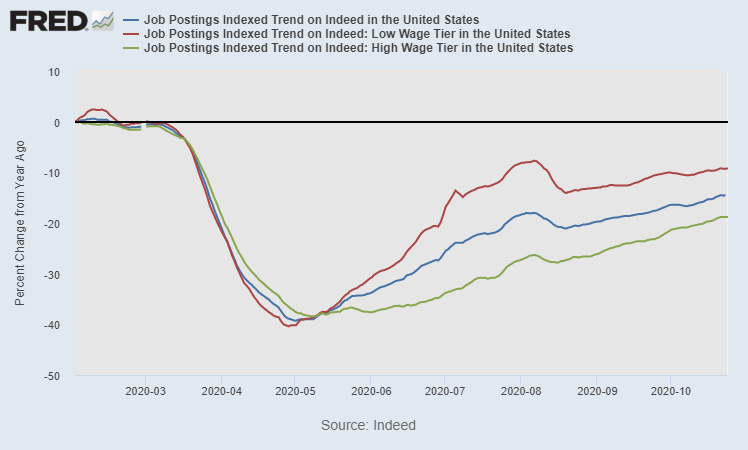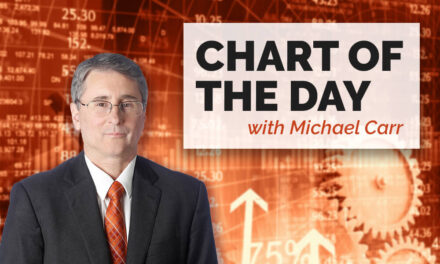Analysts, investors and consumers all share a hope that the economy recovers rapidly. But that’s not the reality we find ourselves in, according to high-wage jobs data.
High-quality economic data indicates the economy slowed.
One problem with this data is that it is delayed. In many cases, data shows what happened a month ago. In some cases, the reporting lag is even longer.
Another problem with economic data is that economists apply different statistical techniques to overcome perceived problems. These adjustments mean the data has to be revised after it’s announced.
Data recently added to the Federal Reserve database avoids these problems. It’s an index of job postings on the website Indeed.com.
This data is collected in real time and isn’t revised. It’s one of the few immediate snapshots of the economy.
The chart below shows the index for all job postings (the blue line), low-wage jobs (the red line) and high-wage jobs (the green line).
Real-time Job Postings on Indeed.com

Source: Federal Reserve.
What a Lack of High-Wage Jobs Means
All three lines fell about 40% as the economy shut down in the spring. Since then, the recovery in low-wage jobs significantly outpaced gains in better-paying positions.
The chart also highlights that the recovery stalled in August; this is consistent with other data being reported, like initial claims for unemployment and new home sales.
After the rapid recovery in the summer and subsequent stall, hiring remains about 15% below the level seen at the beginning of the year.
For those searching for jobs, this is all bad news.
The recovery in job growth has been led by low-wage jobs. Indeed.com notes that the companies with the most job openings include:
- Retailers like AutoZone and Walgreens.
- Restaurant chains like Taco Bell.
- And package delivery services like UPS.
Job postings are just one indicator, but they tend to lead economic activity.
Until more companies hire, the prospects of an economic expansion are dim.
Michael Carr is a Chartered Market Technician for Banyan Hill Publishing and the Editor of One Trade, Peak Velocity Trader and Precision Profits. He teaches technical analysis and quantitative technical analysis at the New York Institute of Finance. Mr. Carr is also the former editor of the CMT Association newsletter, Technically Speaking.
Follow him on Twitter @MichaelCarrGuru.





